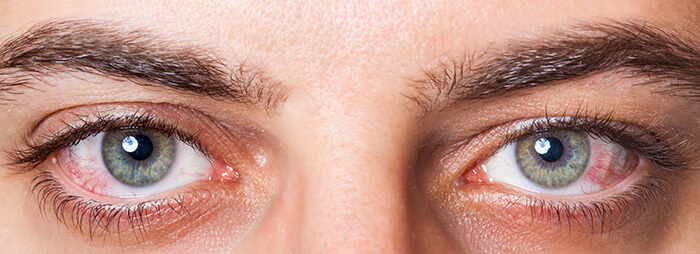
Most of us experience the sensation of dry eyes once in a while due to allergies, tiredness, or excessive screen time. Often accompanied by other unpleasant symptoms such as blurred vision, itchiness, redness, and light sensitivity, the sensation of dry eyes can gradually turn into a chronic condition known as dry eye syndrome (DES).
Read on to learn more about dry eye syndrome, its causes, and various remedies.
Definition
Dry eye syndrome refers to a reduced ability of the eyes to produce enough quality tears. The role of tears is essential for eye health because they nourish and lubricate the eye, maintaining the health of the front surface of the eye. Tears support thus clear vision. In the absence of adequate tear production, your vision can slowly deteriorate.
Common Causes
Dry eye is a common condition, more prevalent in older adults over 50. Aging is thus a factor of high risk. In addition, certain medical conditions can cause a dangerous decrease in tear production. Examples are vitamin A deficiency, allergic eye disease, lupus, rheumatoid arthritis, thyroid disorders, and Sjögren’s syndrome.
Dry eye can also appear as a side effect of a medicine or drug. Examples are antidepressants, antihistamines, birth control pills, or nasal decongestants. If you take any of these, you may experience dry eyes occasionally. Pay attention to the early signs and visit your ophthalmologist to avoid a chronic manifestation of this condition.
Lifestyle Triggers and Environmental Conditions
Lifestyle and environmental conditions can also affect your eye health, causing gradual damage. Office workers who look at computer screens all day without a break are at high risk of developing dry eye syndrome. Working in an air-conditioned or heated environment with constant exposure to dry air is also likely to cause dry eye. Windy, cold, or dusty environments can significantly decrease your tear production.
Wearing contact lenses can also affect tear production. Long-term contact lens wearers are not necessarily more likely to have dry eye syndrome than non-wearers. However, if you have DES and wear contact lenses, your symptoms can be significantly more severe and harder to tolerate. It is critical to look at special lenses that will not aggravate your condition. You can find high-quality contact lenses for dry eyes at contactscompare.com.
Treatment and Remedies
In its chronic form, dry eye is not a reversible condition. All you can do is learn to manage your eye health to avoid complications. However, proper treatment can alleviate symptoms such as irritation, itchiness, and redness. Increasing tear production with over-the-counter artificial tear drop solutions is the quickest treatment for dry eye syndrome.
If eye drops don’t bring you the relief you expect, your ophthalmologist can recommend other treatments. Inserting a punctal plug to block tear duct drainage is one of the best alternatives to eye drops.
In Conclusion
We don’t realize how much we depend on our sense of vision until we experience eye problems. If you have dry eyes, seek help as soon as possible to protect your vision from irreversible damage.